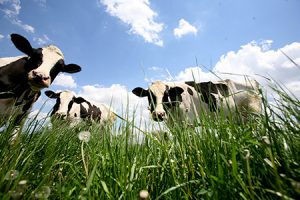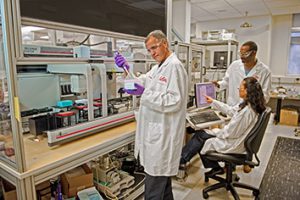Express Scripts to buy medical test gatekeeper for $3.6B
The deal comes as Express Scripts faces challenges on a number of fronts, including the possible loss of its largest customer, Indianapolis-based health-insurance giant Anthem Inc.
The deal comes as Express Scripts faces challenges on a number of fronts, including the possible loss of its largest customer, Indianapolis-based health-insurance giant Anthem Inc.
California has passed a law requiring pharmaceutical companies to explain their price increases, escalating the state-by-state battle between lawmakers trying to bring more transparency to the industry’s practices and drugmakers that oppose the efforts.
Harry Zhang pleaded guilty to two felonies this month after charged with illegally obtaining prescriptions from Canada and Germany and reselling them in China.
Thirty-four new drugs—treating everything from cancer to rare genetic diseases—have been approved so far this year. That’s on pace to nearly double last year’s approvals.

The city of Indianapolis plans to file a “robust lawsuit” against several drug companies, Mayor Joe Hogsett announced Thursday morning.
The U.S. Food and Drug Administration is opening a new front in its efforts to reduce high drug prices by encouraging development of generic versions of hard-to-make medicines.
After struggling for more than 20 years to develop cancer drugs without success, West Lafayette-based Endocyte Inc. is pausing it own R&D efforts to concentrate on a potential blockbuster drug from a German chemical company.
The appointments mark the latest changes in the Indianapolis-based drugmaker’s executive suite since David Ricks took over as CEO in January.

U.S. regulators have approved a new medicine for treating a common type of breast cancer after it has spread to other parts of the body.
From January to July, the agency sent 265 warning letters to companies, notifying them of what it alleged to be serious violations of federal rules. That’s the lowest tally for the first seven months of any year since 2008.
The panel will help promote collaboration among treatment providers, criminal justice systems and child welfare agencies.

The Greenfield-based unit, which makes a vast array of vaccines, antibiotics, feed additives and other health products for livestock and pets, is in a slump, after more than a decade of growth.

Indianapolis-based pharmaceutical giant Eli Lilly and Co. said the 3,500 jobs represent 8.3 percent of its global workforce. Lilly hopes the cuts will save it $500 million a year.
Danish drugmaker Novo Nordisk says it has reached a settlement over allegations that it hadn’t properly communicated safety information when marketing a medicine to treat type 2 diabetes.

The Indianapolis drugmaker said it will not be required to conduct another expensive, time-consuming clinical trial for the potential blockbuster.

Over the past 20 years, while the price of a gallon of milk climbed 23 percent and the sticker on a Dodge Caravan minivan rose 21 percent, the list price of the insulin Humalog shot up 1,157 percent.
President Donald Trump criticized drug prices immediately after Merck & Co.’s CEO quit the president’s council of manufacturing executives Monday, to take a “stand against intolerance and extremism.”
Global pharmaceutical companies including Indianapolis-based Eli Lilly and Co. are heading into smaller cities and rural areas to learn about the health care needs of about 70 percent of India’s population.
The deal is Eli Lilly and Co.’s latest push into a growing disease area for such disorders as arthritis, lupus and multiple sclerosis.
Drugmakers like Eli Lilly and Co. plunged off a patent cliff earlier this decade, losing billions in sales as lucrative branded drugs lost exclusivity. An expensive lobbying effort aimed at preventing a repeat is paying off.